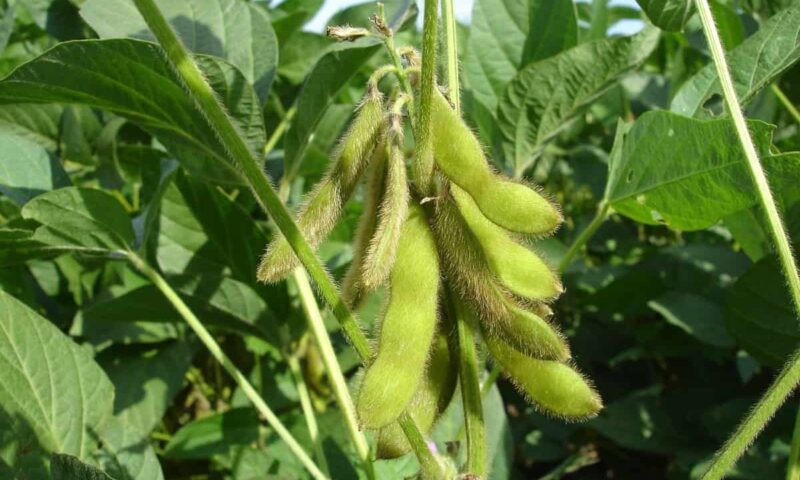By Spy Uganda
Advancements in agronomic, genetic, biological, and crop protection aspects of production have driven increases in soybean yield potential. To maximize this yield potential, it is increasingly important to analyze and maintain soybean fertility. This is not only due to increased soybean yields but also increases in corn yields, environmental concerns, and financial considerations. Due to the nutrients removed when corn is harvested, if the corn crop is larger than expected, it may leave a deficit for some nutrients in the following soybean crop.
Nutrients are the foundation to sustain biological functions, help protect the plant from disease and other stresses, and ultimately support yield. Soybean plants require 16 elements for growth and seed development. Macronutrients required by soybeans include nitrogen (N), phosphorus (P), and potassium (K).
Secondary and micronutrients that aid soybean growth include calcium (Ca), magnesium (Mg), iron (Fe), boron (B), manganese (Mn), zinc (Zn), copper (Cu), molybdenum (Mo), chlorine (Cl), and sulfur (S).
Harvesting a bushel of soybeans removes about 4 lb of N, 0.4 lb of P, 1.25 lb of K, and 0.2 lb of S from the soil. Since soybean plants can biologically fix N in their root nodules, P and K have the most potential to be deficient. Each bushel of corn removes less P (about 0.15 lb/bu) and K (about 0.21 lb/ bu) than each soybean bushel; however, as corn yields climb, total nutrient needs increase and more respective nutrient pounds are removed from the system.
This could potentially leave a soybean crop deficient of P and K. In recent years, 100 plus bu/acre soybean yields have been recorded, making it necessary to be more aware of corn nutrient removals.
Environmentally, if “extra” P is applied for a current crop to fulfill the needs of a future crop, any loss from runoff or soil erosion from topographies may impact bodies of water, resulting in algae blooms. Therefore, it is important to be environmentally responsible with P applications, and, financially, dollars are lost when nutrients are lost to runoff or leaching. Deficiency symptoms may appear on soybean plants if any of the nutrient levels are limited.
Generally, deficiencies and the resulting symptoms are rare unless stress from drought, compaction, prolonged saturation, root disease(s), soil insect feeding, pH imbalance, fertilizer burn, or chemical injury to roots cause symptoms to occur. Iron deficiency chlorosis (IDC) is a common disorder appearing in high pH soils (above 7.0) and soils with high sodium (Na) and calcium (Ca) content. Symptoms of IDC include yellowing between the veins of the newest leaves and reduced nodulation and N fixation.
Soil Nutrient Testing
The first step to determine the availability of soil nutrients is to collect soil samples for nutrient and agronomic testing. Ideally, a test should be conducted every two to three years, and sampling should be completed near the same time of the season for consistency. If maintenance fertilizers are not annually applied, soil testing should be completed every other year. Soil tests should include an analysis for macro and micronutrients, soil pH, buffer pH, organic matter, and cation exchange capacity (CEC).
Lime & pH
Based on the soil buffer pH test, lime applications, if needed, add Ca and help neutralize soil acidity. When soil pH is maintained between 5.5 and 7.0, a) nutrient availability is enhanced, b) microbial breakdown of crop residue increases, and c) N fixation is optimized. Lime dissolves slowly; therefore, applications should occur about 3 to 6 months before planting.
Additionally, lime should be applied one month or more before the application of other nutrients because lime can interfere with the availability of other nutrients, especially P. Lime sources should be evaluated because lime products differ in their neutralizing efficiency based on calcium carbonate equivalency and particle size.

